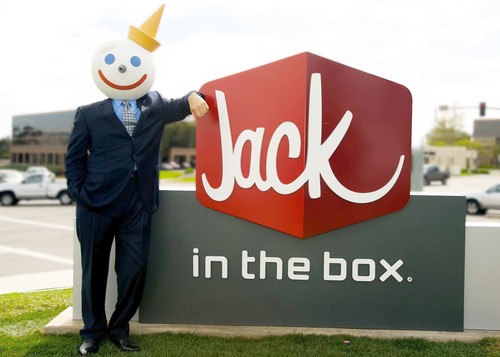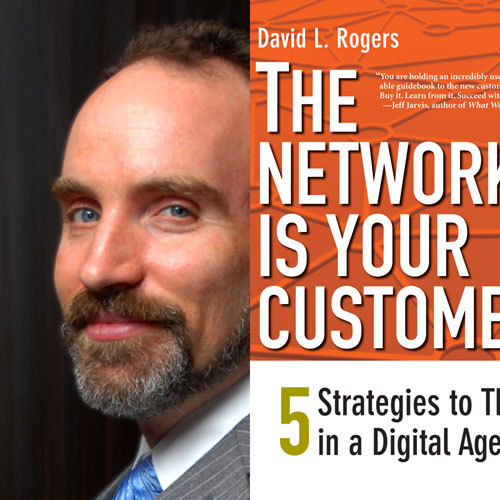 The program you are about to read about is the kind that has kept me excited about being in the marketing biz for (gasp) over three decades. It is enlightening. It is entertaining. It is cool. It supports a cause. And most of all, it is good for the business. In this case, the business is Fusion-IO, whose marketing is driven by former Renegade Trip Hunter who talks about the program below. And in the interest of full disclosure, Renegade was lucky enough to play a part in the development of this program, architecting and designing the website.
The program you are about to read about is the kind that has kept me excited about being in the marketing biz for (gasp) over three decades. It is enlightening. It is entertaining. It is cool. It supports a cause. And most of all, it is good for the business. In this case, the business is Fusion-IO, whose marketing is driven by former Renegade Trip Hunter who talks about the program below. And in the interest of full disclosure, Renegade was lucky enough to play a part in the development of this program, architecting and designing the website.
Drew: For those unfamiliar with Fusion-io, can you provide a quick overview of the company?
Trip: Fusion’s ioMemory software and hardware leverage flash memory to accelerate databases virtualization, cloud computing, big data and the applications that help drive business from the smallest online retailers to the world’s largest data centers.
Drew: The Everest Memory challenge is an interesting twist on ‘content marketing’. Can you tell me a bit about the program?
Trip:It is a great story that has some strong common denominators between Fusion-io and Nelson. We both represent the world’s best memory, albeit in very different forms. Nelson’s memory is mind-boggling. He can memorize a deck of cards in under a minute, and holds the USA record for memorizing 303 random digits in 5 minutes. On top of that, he is climbing Everest to raise money for Climb for Memory, a charity he founded to help find a cure for Alzheimer’s disease, which afflicted his grandmother.
It is just an incredibly interesting story, and one we thought our community, customers and partners would find as compelling as we do. Along the way, Nelson will be testing his memory to see what happens to it under the stress of climbing the world’s tallest mountain. We’ll be inviting others to participate by posting memory quizzes as Nelson ascends the mountain.
Drew: I saw the CMO of SAP speak recently and he felt B2B brands need to start acting more like B2C brands. Certainly the Everest Memory Challenge seems more like a B2C effort. What do you hope this program will do for Fusion-io?
Trip: The Everest Memory Challenge represents qualities that Fusion-io values and embraces. Like Nelson, the Fusion-io team and our customers are people who are adventurous, and take calculated risks to overcome obstacles. We see a bit of ourselves in him, so it is a story we want to share, and whether you work in B2B or B2C, it is one you can relate to.
The Everest Memory Challenge is in some way, about getting to know us a bit better, beyond bits and bytes, by sharing something that we think is worthwhile, compelling and has an emotional connection. It’s a bit like a first date with someone you work with: When you realize you have mutual interests outside of the office, you become more interested in each other.
Drew: Of course, I think this whole thing is really cool. Have you gotten any feedback from folks that weren’t involved in the development of the site?
Trip: Yes, and it ranges from “I love it” to “I don’t get it.” I think this effort adds a new dimension to our marketing, in addition to traditional content driven marketing, but naturally there are some skeptics. That being said, there are very strong connections between Nelson and Fusion that make this more strategic than many sponsorship opportunities. This is more than sticking our name on a golf bag or a hat. Attaching ourselves to something that is inspirational and representative of who we are as a company says much more about what drives us and our business.
Drew: How long have you been working with Nelson, and why him?
Trip: We started working with Nelson about two years ago, shortly after he won the USA Memory Championships for the first time. We are both champions of being the world’s best at memory, so it felt like an easy fit. Nelson’s story is also new to people; “He’s a memory what?” People are intrigued and it breaks through the noise because they haven’t heard this story already.
We have worked with Nelson to create a video series on how to learn his memory techniques, such as memorizing names, which most of us can stand to become better at, to having him at events, where he can memorize 75-100 names of our guests just by meeting them as they arrive. It makes for a pretty memorable moment when he walks around a room recalling everyone’s name. It is a moment that our customers and partners don’t soon forget.
Drew: Seems like this is a really tight partnership. Do you have any words of wisdom on how to make the most of partnership programs like this?
Trip: Look for partnerships where there is real synergy with your core values and brand promise.
Drew: One of the risks of a program like this is that it is a ‘one-off’ which is only great while it last. How does the Everest Memory Challenge fit into your overall marketing strategy?
Trip: We are developing a number of initiatives that focus on how Fusion provides technology and tools that help our customers push boundaries, do the unthinkable, and change the world around them. A position we call “Same Planet. Different World.” Nelson embodies the human side of this position. He represents individuals that overcome challenges and help change the world around them. That becomes the litmus test for what we get involved with then. Our overall marketing strategy focuses on the people who, because of their drive and vison-change and positively impact the world in which we live.




